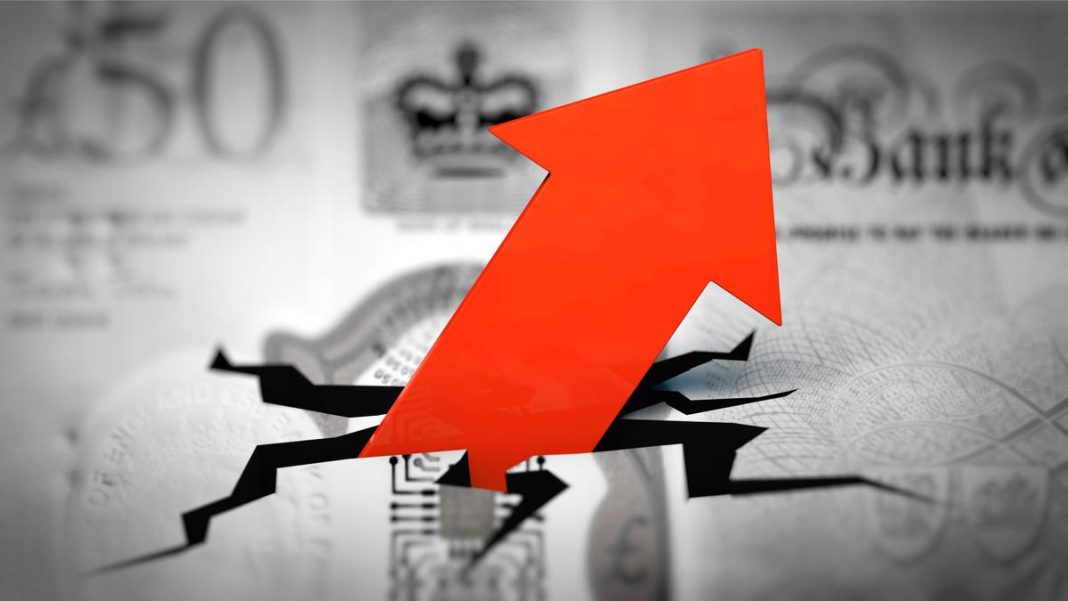According to the Office for National Statistics (ONS), the public sector net debt in the UK reached a record high in May, surpassing levels not seen in over six decades. Currently, it exceeds the country’s annual economic output. Additionally, government borrowing has surpassed expectations, with a deficit of 22.9 billion pounds in June, marking the highest level for June in almost thirty years. Regarding UK debt to GDP history, the exact figures depend on the specific period you refer to.
However, it is evident that the current public sector net debt levels are exceptionally high and have exceeded historical norms. As for the reasons behind this unprecedented increase in UK government debt, several factors contribute to the situation. These factors and other ongoing economic pressures have contributed to the remarkable rise in UK government debt.
UK Government Debt Surpasses 100% of GDP:
The UK’s net public sector debt, excluding borrowing from government-controlled banks, stands at £2.567 trillion ($3.28 trillion), accounting for 100.1% of the country’s gross domestic product (GDP). This is the first time since 1961 that UK government debt has exceeded 100% of GDP, indicating that public sector borrowing exceeds the size of the UK economy.
Unprecedented Increase in Public Spending:
UK government debt has experienced a shocking surge, with an increase of £4.1 billion compared to the previous year. Published statistics reveal that public spending rose by £9 billion to £86 billion. The UK is facing the most challenging economic situation among OECD member countries, characterized by a financial crisis, increased inflation, and unfavourable conditions.
UK Government Borrowing Exceeds Forecasts:
In May, UK government borrowing reached £20.045 billion ($25.5 billion), surpassing April figures by £3 billion ($3.8 billion). This amount still exceeds the average analyst estimate of £19.5 billion ($24.8 billion). May’s government borrowing represents a £10.7 billion ($13.6 billion) increase compared to the same month in 2022, marking the second-highest figure for May since recording began in 1993.
UK Consumer Price Growth and Inflation:
Despite increased taxes and interest rates, UK government debt sets new records. The Office for National Statistics reports that consumer price growth remained high, with an inflation rate of 8.7% in the previous month, surpassing expectations for the fourth consecutive month. This situation poses risks to the economy and necessitates measures to curb inflation.
Interest Rate Hike and Economic Recession:
The Bank of England’s decision to raise interest rates to their highest level in thirteen years reflects concerns about a potential economic recession. With interest rates increasing by 0.25% monthly since December of the previous year, when COVID-19 restrictions began easing, the bank aims to combat inflationary pressures. The heightened risk of recession raises challenges for economic recovery.
Failure to Meet Economic Promises:
Rishi Sunak’s campaign promises to control inflation and reduce taxes have yet to be fulfilled. The UK faces one of the worst economic situations in recent decades. This downturn has significantly declined the pound’s value and reduced confidence among businesses and large corporations. Experts predict that the economic recession will persist until at least the end of 2023.
The Surge in Corporate Bankruptcies:
Many experts draw parallels between the current state of the British economy and the financial crisis 2009. Corporate bankruptcies have reached unprecedented levels, with thousands of companies unable to withstand the crisis. The Office for National Statistics reports that corporate insolvencies in the UK during the second quarter of 2022 were close to the record levels in 2009.
Impact of High Energy Prices on Bankruptcy Rates:
Energy prices play a crucial role in the rise of bankruptcy cases. Between March and July alone, the number of bankrupt companies reached 5,629. A survey conducted by the UK Statistics Agency reveals that one in ten companies is at risk of bankruptcy by the year’s end, with 22% of business owners attributing this risk to high energy costs. Increased energy expenses and government support programs contribute to the country’s soaring public debt.
Conclusion:
The UK government’s debt has reached unprecedented levels, surpassing 100% of GDP for the first time since 1961. Factors such as increased public spending, higher borrowing rates, and rising energy costs have contributed to this situation. The impact includes
- inflationary pressures,
- the risk of economic recession, and
- a surge in corporate bankruptcies.
Addressing these challenges will require effective measures and strategies to restore economic stability and fiscal health.

